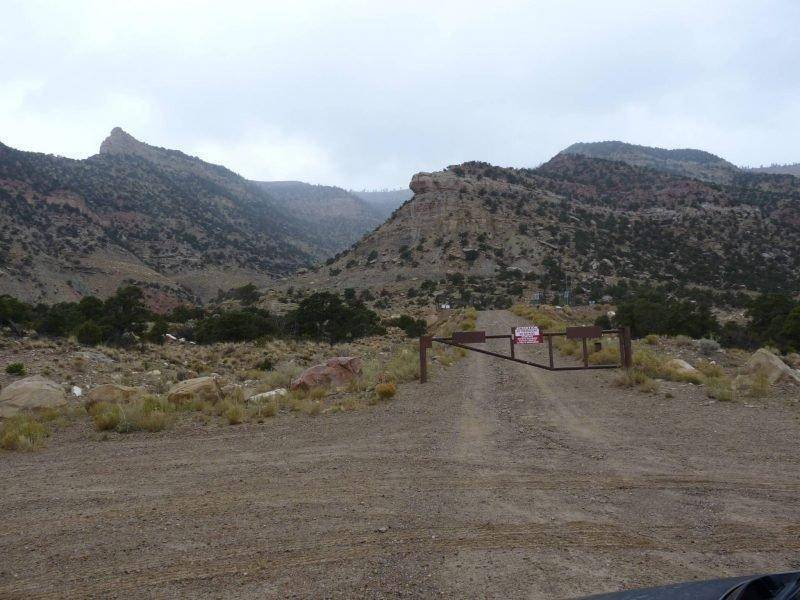By Julie Johansen
After years of discussion, planning and a little controversy, interested individuals met at the trailhead of the Des Bee Dove Mine Trail Monday morning to finalize their plans for an OHV trail.
Attending were representatives from the an OHV club, East Mountain Permittees, Emery County Water Conservancy District, Johansen & Tuttle Engineering, Emery County personnel and State Parks.
Conducting the meeting was Mark H. Williams, chairman of the OHV club. He first gave a history of the mining road in that canyon. When the LDS Church owned the mine, they made a road up the canyon to periodically check its water supply. The mine then changed ownership and was eventually shut down in 1987. When the mine was reclaimed, the trail was moved to the old wagon trail up the side of the mountain. The Forest Service owns the land on top and the bottom of the trail, but most of the trail is owned by PacifiCorp. Emery County does own an easement for the OHV Trail as well as an easement for a hiking trail up the old Tom’s Trail.
A contractor has looked over the trail and has given an estimate of $57,000. These funds have been secured. Bids will be let on this project. If there are any artifacts or remains, they will be preserved. An information center will be constructed that will contain church, reclamation and mine history. An access road for OHV travel from Huntington City will be built for easier access for residents from the north end of the county.
Emery Commissioner Keith Brady stated he was in favor of the trail but, as commissioners, their main concern was liability. Water Conservancy Chairman J. Mark Humphrey was also in favor as it would make much faster access to a communication site that transmits information from stations in Huntington Canyon and on that side of the mountain. State Parks representative was also in favor as it would make the mountain more accessible to more people.
Shannon Cloward spoke for the cattlemen with affirmation as long as the following conditions previously agreed on were followed: 1. Trail be closed to UTVs for a couple of weeks in the spring and again in the fall for cattle trailing to and from the mountain for grazing. 2. A cattle guard be placed at the top of the trail with a wide enough fenced area so that cattle would not be pushed into the cattle guard by OHVs. 3. A sign placed on the trailhead notifying users of the closure dates and that this is a cattle trail and there will be cow manure on the trail. 4. She also voiced concern that this would make the mountain more accessible to those trying to stop grazing. 5. Keep the Cattle Association involved in future planning and construction of the trail. A couple of horse riders were also in favor of the trail.
With exception of the cattlemen who use the trail every year, few attendees had been on the trail. Some said they were going to drive up from the other side and walk off the trail.

